Articles
FIRST TIME HERE?
READ THIS ARTICLES FIRST

Mentors are awesome. They speed up your success, help you avoid failure, and catch you when you fall. They also give it to you straight when you are being a jackass.
It’s no surprise that mentors are a crucial part of the hero’s journey.
In my own career, I’ve invested A LOT to have my work reviewed (AKA torn apart) by a few superb writers. Safe to say, I am 100% in support of investing in a mentor as soon as you’re consistently picking up projects.
Not just because you get better at copywriting, but for help with all the tricky business stuff (like getting royalty deals, higher project fees, how to ditch “red flag” clients, etc.).
And this applies to every area of business, especially ones where Schlep Blindness runs rampant.
What is Schlep Blindness
Originally a Yiddish word, Schlep, in American terms, means tedious or unpleasant tasks. The idea of Schlep Blindness was first introduced to me by my copywriting mentor Chris Wright (who’s one of the best copywriters on the planet). Chris described it like this:
Long story short, it’s where our unconscious brain stops us from seeing problems that are too scary to face. Like a promo flaw that would require a big ol’ rewrite to fix.
But it doesn’t just apply to copywriting. In fact, it runs rampant in entrepreneurship and business too.
Paul Graham talks about this in his essay on Schleps, as he finds out that most business is basically a bunch of Schleps put together.
The scary thing about schleps is that it’s mostly unconscious, which means it will be almost impossible to see. That’s schlep blindness.
Schlep Blindness In Copywriting
Schlep Blindness runs RAMPANT in copy – I’ll give you an example. A copywriter pours their heart and soul into a promo. They spend a month or two writing an ~8,000-word promo…
They’re emotionally drained and counting down the days until they can hand the copy into the client. But because they’re so drained, their subconscious is working overtime to protect them.
It hides away the glaring problem in their copy. A problem so big it can literally make or break the promo. The problem could be that the story they’re in love with isn’t right for the audience (ask me how I know, lol).
It could be a missing piece of logic that raises a make-or-break objection, or it could be something else.
Whatever it is, the subconscious stops the copywriter from seeing it and forcing a rewrite that’s going to drain even more emotional energy from the poor person.
This might sound familiar.
Especially if you’ve written in a market like financial publishing, where the copy can get so damn complex under the surface. The good news is, you don’t need to be blinded by Schleps.
How To Avoid Schlep Blindness And Skyrocket Your Success
In business, you can get away with schlep blindness by being ignorant. I’m sure most founders would agree that if they knew about the total amount of work and chaos that was needed to build their business, they wouldn’t have even started. I know I was that way.
Ignorance can’t solve everything though.
For copywriters, it’s a little bit different, because being ignorant can cost you money, time, and clients. The only way to avoid Schlep Blindness is to get someone else to look at your work – a partner, a copy chief, a mentor.
As long as you have a mentor – someone to regularly look over your copy – you’ll be able to spot the problem BEFORE they destroy your promo. Yes, it’ll suck having them pointed out, and it’ll suck even more having to rewrite entire chunks of your copy.
But that’s a fair trade for a better shot at some handsome royalties.
Bottom line?
Get a mentor. Now.
If you can’t find one, then you will have to deal with Schleps on your own. IF that’s the case, I suggest you jump right in. Don’t shrink away from difficult work because it’s tedious – it may be the path to something extraordinary.
Note: This article was adapted and expanded upon a Facebook post by my copywriting mentor Chris Wright… who I literally hired the day after he posted that in a Facebook group.
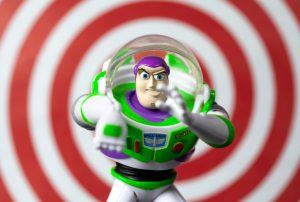
According to the dictionary, dimensionalize or dimensionalization does not exist. And yet, it’s one of the most potent hypnotic writing secrets A-list copywriter’s use to successfully move people to action.
In the advertising world, dimensionalization is actually a verb. It means to add layers. Simply put, dimensionalization occurs when you take a benefit that the reader could receive from your product (like weight loss)… and add a few layers to it (have their partner look at them like they did when they first met.)
Adding dimensions to your advertising makes everything feel more real like you can taste the feeling. Dimensionalizaiton turns 2D into 4D.
A-list copywriting makes everything feel more real. The problem you’re solving, the consequences of not solving it, the solution… and of course
the reasons’s why they’d want that solution.
And the more REAL you make it feel, the better response you’ll get.
Benefits vs Features vs Dimensionalization
If you read some of the oldest marketing books, you learn the value of selling benefits, not features. In Jordan Belfort’s terms, you don’t sell the pen; you sell ideas that come with it. This pen may inspire the next great American novel, wouldn’t you want that to be you? If you’re a copywriter, this pen can help you generate an extra 6-7 figures a year for you and your clients.
Features are what a product has. Benefits are what the product gives the user. Dimensionalization takes this a step further and includes the question:
“But, what does that really mean?”
Let’s go back to our pen example. An important feature could be that it holds more ink than its competition. 165% more, to be exact. A benefit could be that it helps you stay in the flow, write for longer, and allow you to do your best work for longer. I guess a few people would buy this pen for that boring claim.
To dimensionalize it, simply ask yourself: what does that really mean?
If you can write for longer, then you wont’ be interrupted, and you can be more captivating and inspiring.
What does that really mean?
It means you’ll be more successful as a writer, become a rockstar, and maybe even have your books made into movies.
What does that really mean?
Your books will become so famous that you’ll become immortal.
That’s how you dimensionalize a – YAWN- boring benefit; turning a simple pen that holds 150% more ink and turning into a weapon of influence, power, and a springboard to stardom and immortality.
The pen becomes the first day of the rest of their life, the fulfillment of their dreams, their desires, and their ultimate destiny.
How to write dimensionalized benefits on demand
The easiest way to create dimensionalized benefits is to use the 5-Why chart I learned from a friend. It looks like this:

This chart helps you by zooming out and seeing the bigger impact a simple product can have on the reader’s life.
In the first column, you write the feature of your offer. This is where the 165% more ink would go. In the next column, you can list the benefit of this. Then every column after you keep listing the benefits associated with the previous column, asking yourself: what does this really mean?
You don’t have to fill out all 5 columns (I almost never do), but the more you can, the better. The important thing is to reflect on which dimensionalized benefit hits the core of your target audience, and use that as much as you can in your copywriting.
If you are still having trouble with the dimensionalization, just imagine walking your prospect through what their life will be like once they finally get their hands on the product and use it. Then write about it in the most visceral way possible.
Your turn
Dimensionalization is powerful stuff. When done properly, this is powerful stuff because your product becomes the fulfillment of your prospect’s ultimate desire.
Features don’t sell well because they are telling the prospect how cool and awesome the product is. Dimensions show it. They demonstrate the ownership experience and the life transformation that can occur.
Dimensionalization allows your reader to temporarily feel the power of your product once they buy it, creating a painful disconnect in their subconscious to influence their decision to buy now. Because if they don’t, they won’t get to experience all that in real life.

One of the biggest issues with writing the close is this – it often comes last. After hours and hours of writing, you are emotionally and mentally spent and just want to wrap it all up. This often leads to half-assed close, which can leave millions on the table.
And because the close isn’t viewed as the most important piece of copy, it’s often overlooked – especially when looking to beat your control.
If you’ve ever watched a great movie, they almost always master the close. In fact, many movies that could have been in the hall of fame, fall short because their close was weak. The ending is off. Just watch the TV show Dexter and you’ll know exactly what I mean.
A bad close leaves the audience unsatisfied, with a bitter taste in their mouth. They feel as if they just wasted all this time with you – because it didn’t end well. At the box office, it means poor ratings.
In copywriting, it can mean poor conversions, less money, and a failed product.
What is the crossroads close?
The crossroads close is a slightly more advanced sales copy technique that works like gangbusters. It uses all the essential elements above, in addition to one other persuasion tactic: a crossroads choice.
The crossroads choice essentially gives the reader two options
- Continue down their current path, not taking the solution or product and not fixing their problem
- Buy the product, fix their problem and enjoy life after the problem is solved.
5 Ingredients to a masterful crossroads close
1. Recap the offer and the big promise
People get busy. They skip sections, miss portions, and are generally lazy. Add in all the other distractions of modern day life, and this is a perfect recipe for missing your great offer.
Which is why it’s imperative you recap the offer. Tell them what they get (again), especially near the call to action. While it may seem redundant, your conversions will thank you for it.
Why it works: By clearly stating the offer, you let the reader know what they are getting and for how much. It adds confidence in the form of knowing.
2. Sweeten the deal
One of the fastest ways to get “on the fence people” to jump off and buy now is by sweetening the deal. Whether it’s a bonus book, free installation, or an unexpected add on, a little goes a long way.
When finalizing your offer ask yourself: how can I make this offer more compelling? Can you include free shipping or installation? What about a free trial on a complementary product? If you have multiple options – as in the case of supplements – how can you make the more expensive offer more compelling so that you can increase the average order value (AOV)?
Why it works: When you sweeten the deal, both their logical and emotional brain become in sync, which really helps in locking in the sale.
3. Inject a little FOMO
“The fear of loss is a greater motivator than the desire for gain.”
I’m not sure who coined this, but FOMO (fear of missing out) is one of the best persuasion weapons you can use. Just think, how many times have you bought something because a deal was ending and it was going to be taken away?
One of the best FOMO offers I’ve ever seen was for a fat loss book. In the offer, the copywriter said he would take away one chapter after the first 50 purchases.
I’m not sure how much the offer did, but I know that got me to buy almost immediately. And no – I wasn’t one of the first 50.
Why it works: When you inject a little scarcity, it makes them want to buy now and not wait.
4. Reverse the risk
Unfortunately, most people have been scammed at one point or another, which makes them skeptical. Reversing the risk by offering a guarantee is the absolute easiest way to overcome this objection.
Beyond this, it instills a sense of confidence in the purchase. If the company is willing to offer a 1-year guarantee, the product must be amazing. And if they’re willing to give a full refund if you’re not satisfied, there’s absolutely no risk for them to make the purchase.
Why it works: When you provide a clear guarantee, you remove all risk on the part of the reader and add confidence to the reader that you and your product are of high quality.
5. Paint a crossroads
A crossroads close usually starts with the phrase: you now have 2 options.
What comes after, paints a picture of what their futures could look like, hopefully skewing the favor in buying your product/service.
Take this 100% fictitious acne product example:
Right now you have 2 choices… you can continue to live with all the pimple forming, acne scarring acne or you can get the Acne Eraser and wipe it all away for the rest of your life. I know that you’ll make the right choice. Buy now.
This is a little aggressive and not as drawn about, tut the copy moves the reader towards buying the product or service by simply stating too different futures that could occur based on our next decision. And almost everyone is willing to invest some money for a promise of a better future.
Why it works: When you create a crossroads, you make it extremely obvious which future they should choose, and why they should go down the path with you (and your product/service/offer).
6. Clearly tell them to take action now
Every copywriter and salesman worth his money knows that, eventually, you have to ask the customer to buy now. Talking and writing too much can literally crush a sale. And not asking for one is even worse.
Unfortunately many copywriters leave it up to the reader to decide what they want to do. I urge you to do the exact opposite. Tell people exactly what you want them to do. Tell them to buy now.
Why it works: When you ask for the sale you lead the reader and help them get the results you’ve promised. Most of the time, people need to be told what to do to take action.
A final note on writing a killer close
Just because the close comes last, doesn’t mean it deserves less attention than the rest of your copy. Even if the rest of your copy is perfect, that grabs their attention, clearly articulate the big idea, and draws them in with an emotional story, if you don’t or don’t know how to close the deal, all of it will be for nothing.
Focus on the fundamentals, and paint a vivid picture about the future. Offer a crossroads about what’s going to happen. And make sure it’s so clear that they would be stupid not to take the road less traveled, with you.
Bonus: A crossroads close in action
The best way to demonstrate how a crossroads close works is to simply give you a piece of copy to review.
This next passage is one of the best crossroads closes I’ve ever seen. You can clearly see every single human-incentive tactic, weaved together in a spellbinding fashion.
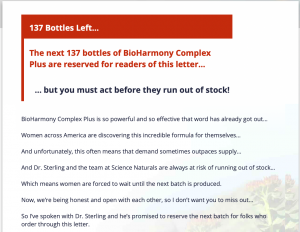
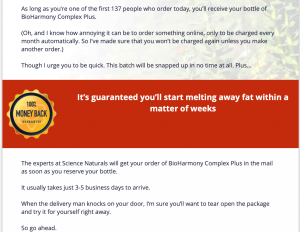
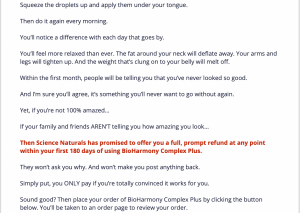
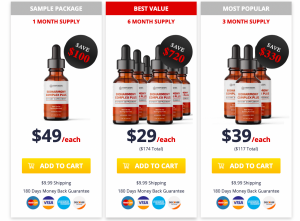
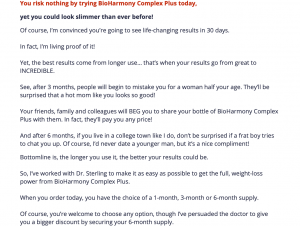
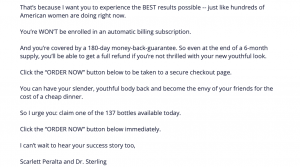
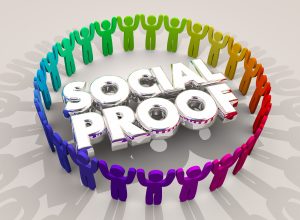
My girlfriend was watching a show similar to diners, drive-ins, and dives – typical behaviour of her to tease me with when I’m on a diet, eating chicken breast salad every meal for weeks on end. Today the show host, NAME, was in rome.
He was reviewing this wicked sandwich place. A quick search on google, and we found that it had over 20000 5 star google reviews. She added it to our “italy trip must visit food places” almost immediately.
Another story…
We were in Tulum, Mexico for my girlfriend’s birthday. For her birthday dinner, we don’t know where to go. There were a ton of amazing recommended restaurants. So we looked a trip advisor for the number 1 reviewed place. It was this Japanese steakhouse with over 10000 positive reviews.
The other restaurants we had heard about were also on the list, but had a few thousand less. We ended up going to the japanese steakhouse (which turned out to be fairly average – but they had such great reviews because they essentially bribed you at the end of the meal to rate them on trip advisor.)
Another story…
We went to chicago, and saw a lineup for a burger place. Turns out it was a 3.5 hour wait. The curiosity of everyone lining up made us stay… for 3.5 hours, while it rained.
I can go on and on about how social proof has influenced my decisions, and pretty much at least 100 decisions of every single human being on this planet, subconsciously or not.
Have you ever walked into an empty restaurant and wondered…
“what is wrong with this place, why is no one here?”
Or seen your favorite celebrity/influencer/role model drink a certain beverage and now you have to try it too?
That’s social proof 101.
The principle of social proof – coined by Robert Cialdini in his 1984 book, Influence, states that people look for cues on how to behave based on the behavior of others around them – with friends, family, and role models giving the most powerful cues.
Let’s go back to the restaurant example. When you see an empty restaurant, your brain assumes it’s not a good restaurant – because no one else is there. After all, if they served good food, people would be in them, right?
That’s social proof in its most raw form. Your brain assumes that no people in a restaurant means something is probably wrong, even if the restaurant in question has three Michelin stars.
In fact, social proof is so powerful it can even make intelligent people purposely choose the wrong answer, even if they clearly know the right answer.
Can I force you to lie?
One classic example of social proof is the conformity experiment, conducted by Solomon Asch in 1951.
Asch was a psychologist who wanted to prove that people can conform to a wrong decsion if the majority of the group chose the obvisoul wrogn answer.
For the experiment, Asch gathered 50 male college students to participate in a line judgement task. Each 7 person group was shown images like the ones below:
Each member had to state, out loud, which line (A, B, or C) matched the target line on the left. However, only one of the eight was actually being tested. That person went last during the roll call. The other seven had agreed beforehand to pick the wrong answer (B).
In 12 trials, 75% of the unknowing participants conformed and gave the wrong answer at least once. Yes, 3/4 of the time, people chose the wrong line – despite how clearly obvious it is.
After interviewing the unknowing participants, it was determined that most of them knew the answer was wrong. Yet, they still conformed for one of two reasons:
Normative influence – they wanted to fit in with the group.
Informational influence – they believed the group is better informed than they are.
It’s extremely clear how powerful social proof can be for marketers and copywriters. By showcasing the popularity of your product, service, or brand, you can subconsciously demonstrate to prospects that you are are the right choice for a lot of other people, and therefore they would be dumb not to go with you.
Why social proof is even more important for online marketers

When shopping in a store, you have the ability to easily compare various brands and products to see which one you like more. You can pick up a t-shirt and feel the difference. You can run your fingers through the textured fabric. You can try them on. You can stretch them out to see their give.
Online shopping does not provide that same experience, which is why social proof is so important to help you make your final decision. Even if you like the look of a shirt, reviews can sway your opinion. If 20000 people like a product, it can’t be bad, right?
Imagine if your local GAP displayed reviews of every product they sold in the store. You probably would start to buy things differently. In fact, it’s already happening.
One study found that 50% of shoppers use their smartphones while shopping in stores to research products before they buy them – which makes mastering social proof that much more important.
Not all social proof is the same
Negative emotions like fear are great motivators to get prospects to buy. Unfortunately, that negativity doesn’t translate well into social proof. According to some studies, negative social poof can really put a damper on conversion rates.
Psychologists Steve Martin and Noah Goldstein tested this theory in an attempt to reduce theft from the Arizona Petrified Forest. They tested three signs, one with negative social proof. It read:
“Many past visitors have removed the petrified wood from the park, destroying the natural state of the Petrified Forest.”
Not only did this sign, filled with negative social proof, fail to reduce theft, it actually tripled the amount of theft. Social proof demonstrated that people were already stealing it, and it was ok – despite the attempt to bring light that it’s wrong.
It’s important to use scarcity and fear; they are powerful motivators. But if you support it with negative social proof, you’re going to run into trouble.
The biggest red flag for negative social proof is to claim that the activity in question is “wrong,” but do so by saying that lots of people are doing/have done it. For example: “This year, Californians will waste more water than ever before.”
If conversions matter, positive social proof is the only way to go.
Another weird thing to realize is that sometimes no proof is better than low proof. In a world where popularity reigns king, no social proof is often better than low social proof. A lack of social proof can decrease conversions by causing trust issues.
But in the world of likes and shares, a few likes is almost worse than no likes. No likes can indicate that you are not set up for social sharing. A few likes demonstrate that you are set up for people to positively rate your product, and very few are. This can cause a lack of trust, harming conversions.
5 ways to inject high-converting social proof into your copy
- Celebrity or influencer endorsement. This one goes without saying. If you can get Justin Bieber, Kendall Jenner, or Robert Downey Jr. to promote your stuff, you win. Game over. Influencers can help, too, because of their deep connection to their audience. This is why Influencer marketing has been considered the fastest-growing consumer-acquisition channel. Businesses are averaging $6.50 for every $1 spent on influencer marketing, with the top 13% earning $20 or more. Gymshark grew to a billion-dollar company this way.
- Customer testimonials. Simply stating that your product works isn’t enough to convince people to buy it. What does compel people to pull out their wallets, however, is a testimonial from someone that has used your product and had a positive experience. The health and fitness industry is amazing at this, providing expert before and after photos to establish major credibility. In fact, 88% of consumers trust user reviews as much as personal recommendations.
- Expert stamp of approval. Be it a famous journal, university, or person, having an expert’s stamp of approval goes a long way. According to Voices, placing logos of business customers on a company website can increase conversions by as much as 400%.
- Approval of the masses. One of the most famous ads of all time reads ten thousand housewives can’t be wrong. This is the approval of the masses in action. If you have established customers, use this to your advantage. People want to be part of the group. And it’s not about claiming you hit a certain milestone, it’s about telling your prospect to join the 10M others.
- Social media. This is the simplest one. If you can build up a massive social media following with good engagement, you can become the cool kid. And once you’re part of the cool kid’s group, everything comes easily. It’s probably why we all fought so hard to be part of it in high school.
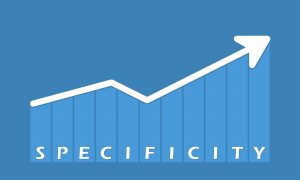
One of the most overlooked and underutilized tools in any direct response page is the specificity sweep. Simply put, the specificity sweep is an editing process that involves combing through your copy and identifying words and phrases that can be enhanced with specifics. Not only does this help you stand out, but it helps you polarize your audience which often leads to better conversions.
For example take a look at these 3 messages:
“Save more on your phone bill by switching At&T.”
“Save up to half your phone bill by switching to AT&T.”
“Save up to $47.39 a month on your phone bill by switching to AT&T.”
You can see how much better his simple headline gets with each specificity sweep.
Specificity equals credibility
One of the biggest benefits of including specifics is that it increases credibility. The reason comes back to human nature. People that lie try to avoid specifics when they weave their tale, to avoid any complications.
However, by simply telling an extremely detailed story, it helps to increase their credibility and believability, because how could you add so much detail without you actually experiencing the lie?
Copywriting legends like Gary Halbert and Stefan Georgi love to include absurd levels of detail in their calls to action; because they know that the better they paint the picture, the more likely they are to get the conversion. Just take a look at the level of detail here:
The experts at Science Naturals will get your order of BioHarmony Complex Plus in the mail as soon as you reserve your bottle. It usually takes just 3-5 business days to arrive. When the delivery man knocks on your door, I'm sure you'll want to tear open the package and try it for yourself right away. So go ahead. Squeeze the droplets up and apply them under your tongue. Then do it again every morning. You'll notice a difference with each day that goes by. You'll feel more relaxed than ever. The fat around your neck will deflate away. Your arms and legs will tighten up. And the weight that's clung on to your belly will melt off. Within the first month, people will be telling you that you've never looked so good.
The entire 10000+ word sales page goes on like this… are we really surprised this company and will do over 20M/year in its first year?
To a beginner or less experienced copywriter, it probably feels weird to give this level of intimate detail. But think of it from a reader’s perspective.
Taking action might cost the reader a lot: money spent, time, and inconvenience. By writing with a level of detail that they can imagine and visualize, this takes away from what’s going to happen when you order and what to expect.
If you want your prospect to taction, be specific. Use high actionable, specific language about exactly what to do and what is going to happen. Don’t seem vague, and don’t let them wonder what will happen next.
Here’s another example by Growth Lab
Headline: How I paid off 77k+ in student loans with my online business
In this headline example, GrowthLab uses a specific debt payoff number to capture their reader’s attention. They could have used a headline like “How I paid off all my student debts with my online business” but it wouldn’t be nearly as effective. The specifics grab your attention, highlight the truth to the story, and show a measurable benefit to the reader if they take action.
And another example:
Headline: How to make $100,000 in a day
Again this headline displays a specific dollar amount you can earn in a day with their formula. I would argue that by using a more specific dollar amount, like $123,756 would make it even more believable and impressive, but it’s still a great headline showing specificity and being polarizing.
“Guestimates” damage credibility
It’s really no surprise that when we see the title “World’s best coffee” we are positively certain that it is NOT the world’s best coffee. In fact, we are more likely to believe the opposite is true because of how vague the claim is.
Specifics convey truth. Details attract attention, produce an aura of authenticity, and create curiosity.
A vague “guesstimate” won’t have the same impact because people are conditioning to believe specifics equal the cold hard truth. Like in the example before, $100,000 in one day is less credible than $123,756 in 24 hours, which is less credible than $123,756 in 24 hours with just three, 256 word emails. Without concrete facts, people assume things are made up, or worse – exaggerating.
The legendary Claude Hopkins sums it up perfectly in his book Scientific advertising:
“To say, “Best in the world,” “Lowest prices in existence,” etc. are at best simply claiming the expected. But superlatives of that sort are usually damaging. They suggest looseness of expression, a tendency to exaggerate, a carelessness of truth. They lead readers to discount all the statements that you make.
But a man who makes a specific claim is either telling the truth or a lie. People do not expect an advertiser to lie. They know that he can’t lie in the best mediums. The growing respect for advertising has largely come through a growing regard for its truth.
So a definite statement is usually accepted. Actual figures are not generally discounted. Specific facts, when stated, have their full weight and effect.
This is very important to consider in written or personal salesmanship. The weight of an argument may often be multiplied by making it specific.
One statement may take as much room as another, yet a definite statement be many times as effective. The difference is vast. If a claim is worth making, make it in the most impressive way.”
When shouldn’t you use specifics?
Specifics are not always usable. One such time is when using specifics can lead to legal issues, which is a big issue when writing weight loss offers. There have been many cases where copywriters claimed 23lbs in 23 days, which then led to 30%+ refunds and chargebacks as well as FTC involvement.
The rule of thumb here is if you are going to make a claim, be able to back it up.
Another issue is where specifics distract and cause confusion, damaging the flow of the writing. Ideally, your reader will gladly read your captivating copy all the way to the end – with no speed bumps from confusing specifics that might deter them on their drive toward your call to action.
How to perform the specificity sweep on your copy
As you can see, specificity is one of the most powerful copywriting tools in your toolbox to increase conversions. However, it can be more damaging than good if doesn’t add clarity or credibility, or if opens you up to potential lawsuits
When you are combing through your copy to perform a specificity sweep, simply ask yourself: Can I add more intimate details to make this line more specific?
If the answer is yes, and it doesn’t hurt the flow of the copy, add it in. I can almost guarantee you will see positive results
Mentors are awesome. They speed up your success, help you avoid failure, and catch you when you fall. They also give it to you straight when you are being a jackass. It’s no surprise that mentors are a…
According to the dictionary, dimensionalize or dimensionalization does not exist. And yet, it’s one of the most potent hypnotic writing secrets A-list copywriter’s use to successfully move people to action. In the advertising world, dimensionalization is actually a…
One of the biggest issues with writing the close is this – it often comes last. After hours and hours of writing, you are emotionally and mentally spent and just want to wrap it all up. This often…
My girlfriend was watching a show similar to diners, drive-ins, and dives – typical behaviour of her to tease me with when I’m on a diet, eating chicken breast salad every meal for weeks on end. Today the…
One of the most overlooked and underutilized tools in any direct response page is the specificity sweep. Simply put, the specificity sweep is an editing process that involves combing through your copy and identifying words and phrases that…
